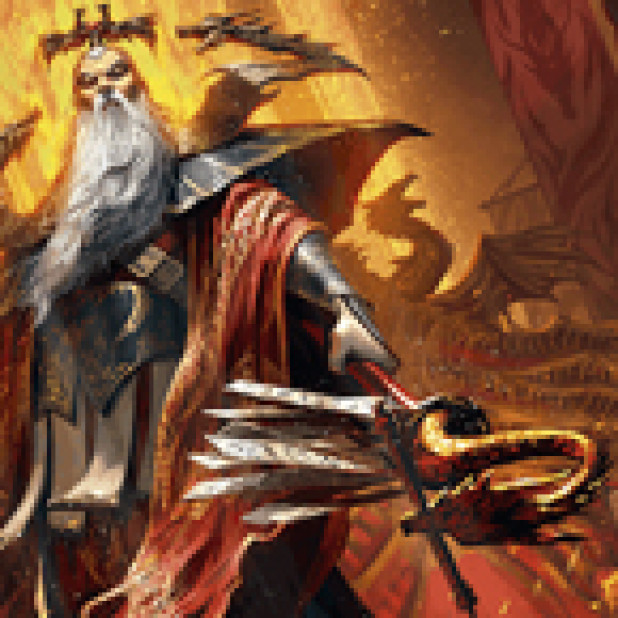If you're an aspiring competitive player of Flesh and Blood, you’ve probably reviewed every hero, honed your sideboarding plan, and adjusted your decklist to press every advantage and shore up weaknesses. Even as a casual player, deckbuilding consideration must be given to your local Armory meta. Yet despite all that effort and thought, the moment you sit down to an Assassin matchup, the power and fear they command is palpable.
Uzuri plays her first stealth attack - and was that a grin at the corner of her lips?
Arakni presents their first contract card, and that spider-like hand reaches over to see what’s on the top of your deck...
While Assassins aren’t considered inherently strong by a competitive community that tends to prefer more linear, aggressive play, they embody the essence of control, forcing you to block ineffectively or excessively to prevent their on-hit effects. But beyond that, the full strength of the Assassin class stems from its power to control the game.
Reaction Time
Assassin is easily the most misunderstood hero in Flesh and Blood, and it starts with comparisons to other classes. While the shared card pool with Ninjas and Rangers might draw comparisons to those classes, Arakni's play patterns are most similarly to Warrior, in that Arakni usually relies on a single attack (of obscured threat) per turn. However, Arakni’s combat tricks spring equally from their hand and their equipment, in contrast to the Warrior's full commitment to the attack reaction card type.
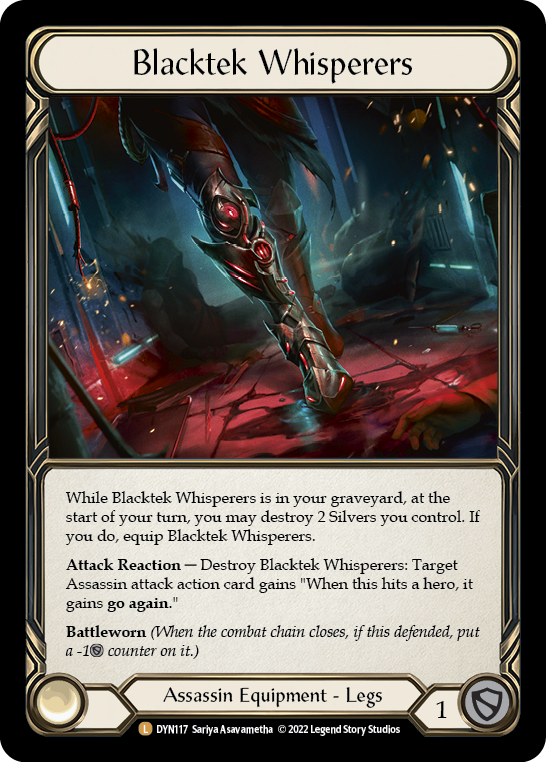
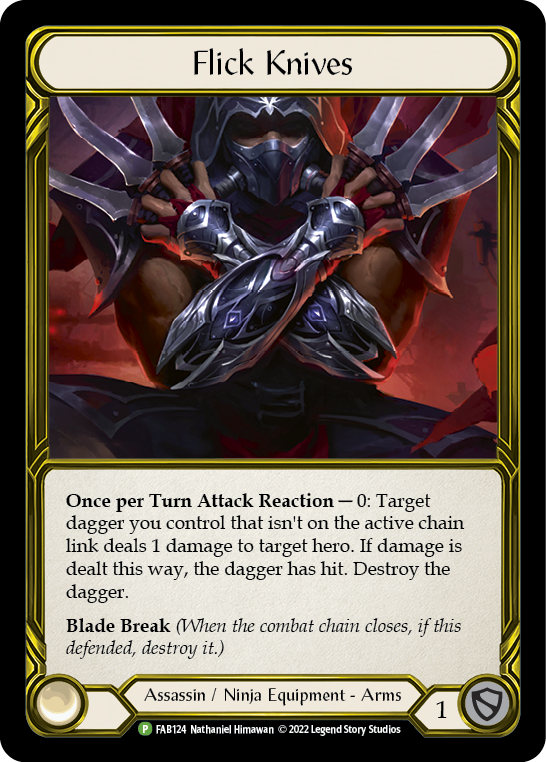
Blacktek Whisperers provides the deck with the ability to threaten an unexpected transition into a second attack at reaction speed. In some cases, this can be seen as a weaker version of Refraction Bolters or Breeze Rider Boots, as it allows your opponent to respond with a defense reaction and prevent damage from occurring; but Arakni has plenty of ways to make sure an attack lands.
Flick Knives can throw Nerve Scalpel to reduce the block value of an anticipated defense reaction. It can serve as an excellent insurance policy when activating Whisperers. Then there are the multitude of attack reactions like Cut to the Chase, Shred (note its interaction with Temper equipment), and Spreading Plague; you can almost always effectively punish anyone who attempts to block.


Chest-slot equipment will always have to compete with Fyendal's Spring Tunic, but there's a particular advantage to Redback Shroud in a deck that ensures hits and thrives off the attack reaction step; Battleworn (as opposed to Blade Break) and the ability to buy the equipment back both make strong cases for it in a contract-focused deck.
Of course, there are times when you lack the cards to punish a defense reaction - but maybe your primary intent was to break your equipment, so you can buy it back with refreshed defense values.
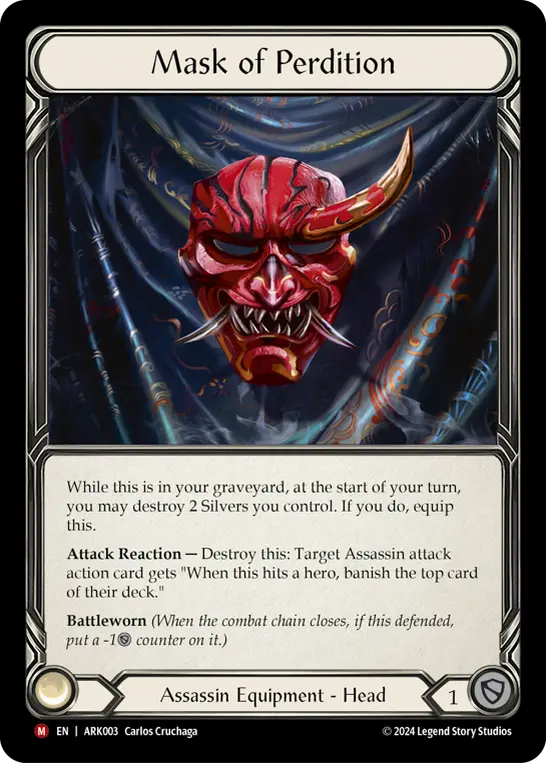
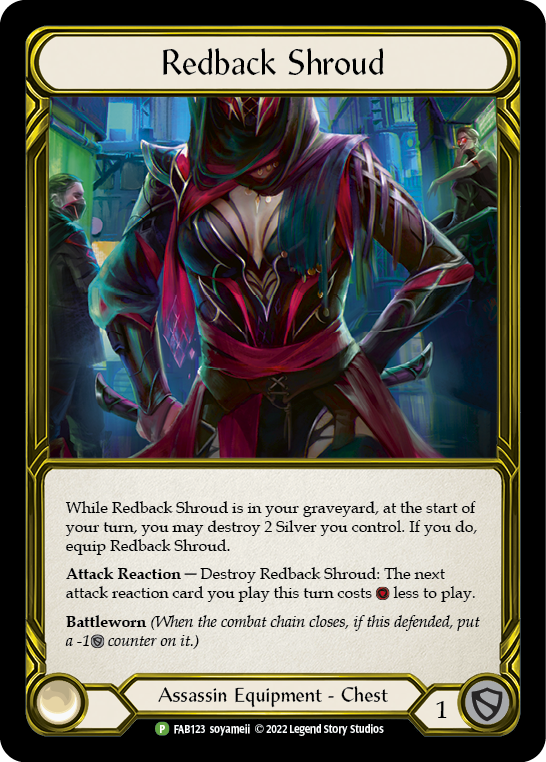
Damage, By Another Name
Now don't mistake my statements as saying Arakni is a pseudo-Warrior. What's key to the Assassin playstyle - and what makes it unique - is that, unlike the play patterns of Boltyn, Dorinthea, or Kassai that accumulate advantage for a late game damage push, Assassins focus on varied forms of disruption and aggressive control. Regardless of whether you’ve built fatigue Arakni, red-based Uzuri, or even contract Uzuri, the strongest cards in your deck will boast that disruption is its own form of damage.
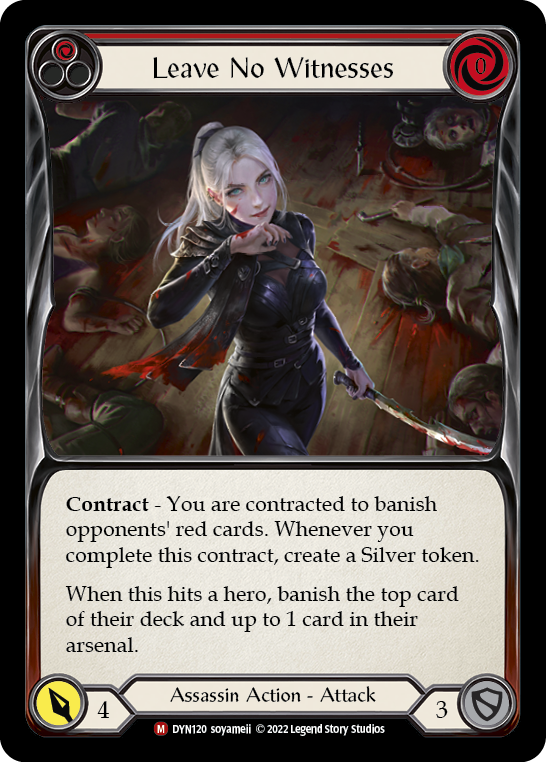
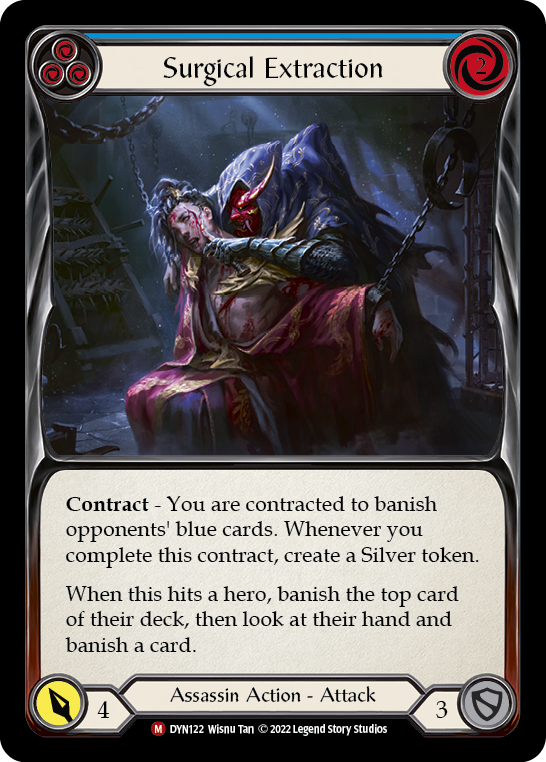
However, as the deck requires attack action cards - and not its weapon - to serve as the primary source of damage, it's often weaker against decks that are capable of fully blocking every turn and throwing back significant damage. And as Assassins generally lack the ability to go wide with multiple attacks that can leak through damage, it can struggle in some matchups - like Oldhim, tank Dash, and Dromai.
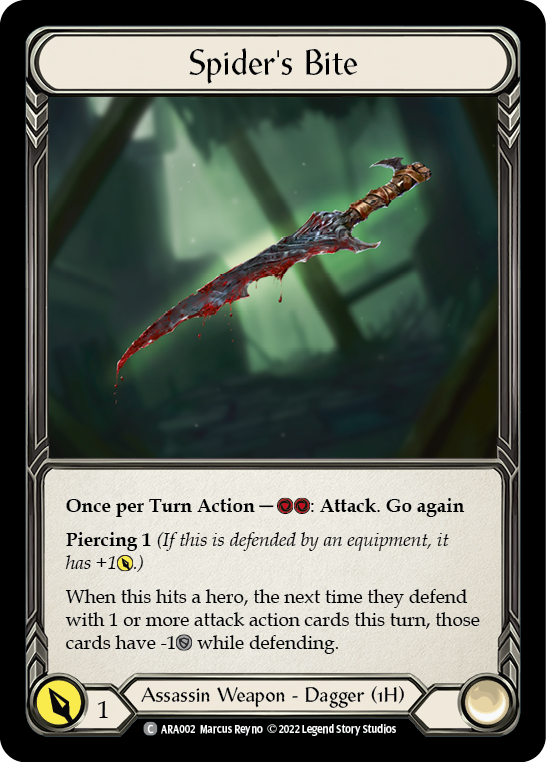
It's here that you need to reframe the definition of damage or risk missing the beauty of the Assassin's gameplay. Every card used to block is less potential damage in your opponent's deck and fewer resources available; and when you do push a little damage over the top, your contract cards banish more damage and resources. All the while, the enemy is slowly leaking damage from Spider’s Bite, seldom worth blocking when preparing for the real attack to follow.
Reverse Pitch Stacking
Now what makes Arakni’s gameplay perfect compared to other heroes (even fellow Assassin Uzuri) is that they can effectively manipulate the opponent's deck with their hero ability. By looking at the top card of the deck and deciding to put it back on top or on the bottom of the deck, Arakni can mess with their opponent’s pitch stacking unlike any other hero in the game. After the 1st cycle is complete, Arakni is capable of having perfect information on their opponent’s deck - and with proper manipulation throughout the game, they can make their enemy incapable of presenting damage, paying resources effectively, or assembling their endgame play patterns.
For those that find the idea of recalling everything in your opponent’s deck daunting, I recommend you generically focus on bottoming weaker cards with high pitch values when you see them. This allows the deck to target strong closing cards like Pummel, Sink Below, and Razor Reflex for banishment, and will make the inevitable conclusion of your battle less scary, as the opponent won't be able to throw any tricks.
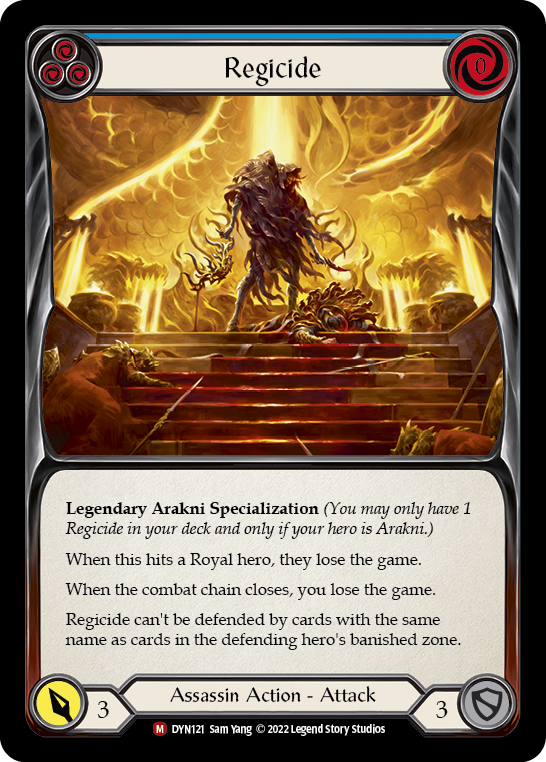
This endgame state is what makes Regicide a vastly mischaracterized card. Often regarded as unplayable, Regicide is a triumphant culmination of a perfectly and beautifully played game. While it requires a Royal opponent to come in off the sideboard, the meta has begun incorporating Crown of Dominion in a number of builds, such as Royal Briar, Royal Dromai, and Royal Riptide. Despite significant life deficits from these extremely high-roll aggro decks, Regicide offers the ability to close out the game from any deficit. Of course, Regicide threatens to cost us the game if it misses, but you read that section on attack reactions, right?
While, in theory, any player can effectively know, memorize, and then theorize how to beat the order of their opponent's deck, it’s Arakni that takes advantage fully after the 1st cycle, as the hero ability itself allows you to have consistent reminders of where both players are in their respective decks. As an Arakni main that topped during the last ProQuest season, I’ve been in games where I've known I’ve won 11+ turns in advance because of my knowledge of the state of their deck. I've closed out games with Regicide because I've tracked both players' decks throughout the match, adjusting the amount I’m blocking or what I’ll allow my opponent to block with in pursuit of that endgame.
This level of attention to detail and calculation is even more impactful when playing in the rare Arakni mirror match; for this, you need to know exactly when to block against your opponent not to prevent damage, but to prevent Silver and equipment buybacks. Trust me, nothing feels more rewarding than winning that mental chess matchup against another Arakni as they think they’re guaranteed to generate Silver and you reveal their failure to complete the contract.
While many would argue that these types of calculations are too difficult to consistently track, I’d argue they are the ceiling of the game on a competitive level, and are designed into the core of Arakni - and Regicide’s competitive viability.
But that’s just a Rogue Theory.


